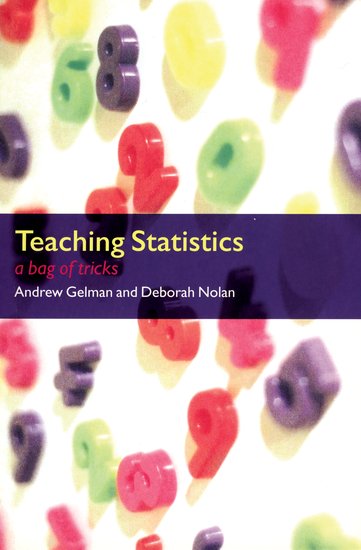By Andrew Gelman
There’s a prevailing notion that communicating science is difficult, and it is therefore difficult to engage the general public. People can be fazed by statistics in particular, so how can we convey the importance of this science effectively?
I’ve earlier written that science is science communication — that is, the act of communicating scientific ideas and findings to ourselves and others is itself a central part of science. My point was to push against a conventional separation between the act of science and the act of communication, the idea that science is done by scientists and communication is done by communicators. It’s a rare bit of science that does not include communication as part of it. As a scientist and science communicator myself, I’m particularly sensitive to devaluing of communication. (For example, Bayesian Data Analysis is full of original research that was done in order to communicate; or, to put it another way, we often think we understand a scientific idea, but once we try to communicate it, we recognize gaps in our understanding that motivate further research.)
I once saw the following on one of those inspirational-sayings-for-every-day desk calendars: “To have ideas is to gather flowers. To think is to weave them into garlands.” Similarly, writing — more generally, communication to oneself or others — forces logic and structure, which are central to science.
Dan Kahan saw what I wrote and responded by flipping it around: He pointed out that there is a science of science communication. As scientists, we should move beyond the naive view of communication as the direct imparting of facts and ideas. We should think more systematically about how communications are produced and how they are understood by their immediate and secondary recipients.
The science of science communication is still in its early stages, and I’m glad that people such as Kahan are working on it. Here’s something he wrote recently explicating his theory of cultural cognition:
The motivation behind this research has been to understand the science communication problem. The “science communication problem” (as I use this phrase) refers to the failure of valid, compelling, widely available science to quiet public controversy over risk and other policy relevant facts to which it directly speaks. The climate change debate is a conspicuous example, but there are many others, including (historically) the conflict over nuclear power safety, the continuing debate over the risks of HPV vaccine, and the never-ending dispute over the efficacy of gun control…. The research I will describe reflects the premise that making sense of these peculiar packages of types of people and sets of factual beliefs is the key to understanding—and solving—the science communication problem. The cultural cognition thesis posits that people’s group commitments are integral to the mental processes through which they apprehend risk…
I think of Kahan as part of a loose network of constructive skeptics, along with various people including Thomas Basbøll, John Ioannidis, the guys at Retraction Watch, bloggers such as Felix Salmon, and a whole bunch of psychology researchers such as Wicherts, Wagenmakers, Simonsohn, Nosek, etc. This doesn’t represent a complete list but rather is intended to give a sense of the different aspect of this movement-without-a-name. Ten or twenty or thirty years ago, I don’t think such a movement existed. There were concerns about individual studies or research programs, but not such a sense of a statistics-centered crisis in science as a whole.
Andrew Gelman is a Professor in the Department of Statistics at Columbia University. He is the co-author of Teaching Statistics: A Bag of Tricks with Deborah Nolan. Read his blog Statistical Modeling, Causal Inference, and Social Science.
Subscribe to the OUPblog via email or RSS.
Subscribe to only mathematics articles on the OUPblog via email or RSS.




Maybe I’m misconstruing you, but several points seem off-the-mark:
1) Science and science communication are two different things (though they can overlap or intermingle). A person can be good at doing science and poor at communicating it (indeed, in some historical cases, good science was done and only discovered long after the doer’s demise, if s/he never promoted it).
2) There are certainly ELEMENTS of good communication (that cross a lot of different boundaries), but saying there is a “science of science communication” seems an overreach.
3) Finally, skeptics have always been around but simply have easier means for connecting with a wider audience today. I knew folks 40 years ago who saw very little good ‘science’ coming from epidemiology and today they can get a hearing.
Science communication is difficult because real science IS difficult and only narrowly accessible. What is more concerning is not the citizenry’s poor understanding of science (which will always exist), but the growing lack of TRUST they have in the scientific community — an unwillingness to any longer accept things based on a scientist’s say-so. Just as atheists and agnostics toward religion have become more prominent, so have those who are atheistic or agnostic toward science!
The science of communication can certainly be studied further, but there’s a lot we already know. What’s missing from science communication – in my opinion – is both understanding of audience need and a rational, institutional-level approach. Science – at the institutional level – can learn much from other institutions (such as corporations) about how to analyze what audiences need to hear and how to persuade the public to accept scientific principles such as ‘uncertainty.’ Perhaps another problem is that people who study science communication believe they are inventing the wheel when in fact it’s already been invented and is in common and effective use.